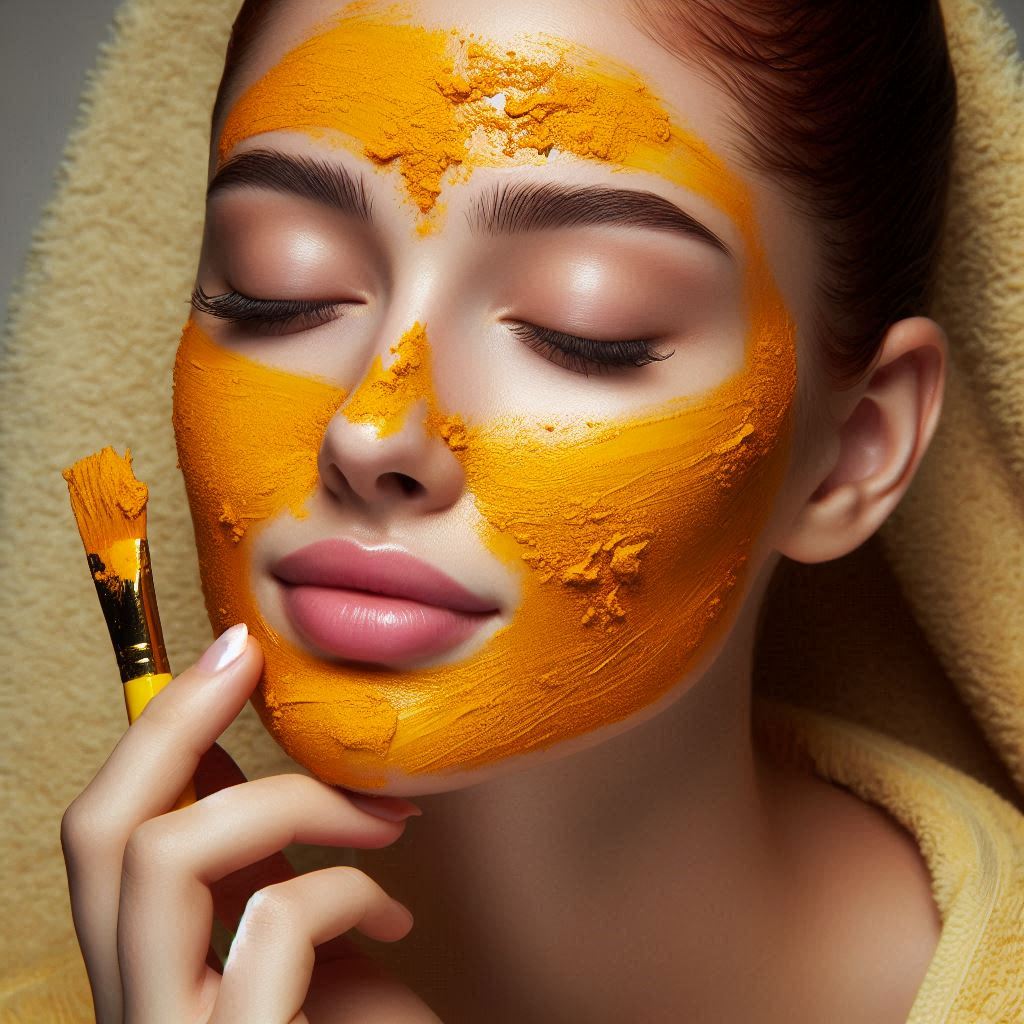
In a world where skincare trends come and go, one natural remedy has stood the test of time: the turmeric face mask. Known for its vibrant golden hue and centuries-old use in beauty rituals, turmeric has captured the attention of skincare enthusiasts everywhere. But what makes this humble spice a powerhouse for your complexion? The benefits of turmeric face masks are vast, offering a natural way to achieve clear, healthy skin without relying on harsh chemicals. Whether you’re battling breakouts, seeking a brighter glow, or hoping to turn back the clock on aging, turmeric might just be the secret ingredient you’ve been missing. In this article, we’ll dive deep into the science, practical applications, and transformative effects of turmeric face masks, empowering you with everything you need to elevate your skincare game.
The Science Behind Turmeric’s Skin Benefits
Turmeric isn’t just a kitchen staple—it’s a skincare superhero, thanks to its active compound, curcumin. This potent antioxidant is the driving force behind the spice’s ability to heal and rejuvenate the skin. Scientists have long studied curcumin for its impressive properties, and the results speak for themselves.
- Anti-inflammatory action: Inflammation is at the root of many skin woes, from redness to acne flare-ups. Curcumin steps in to calm things down by reducing inflammation at a cellular level, offering relief to anyone with sensitive or irritated skin.
- Antimicrobial strength: Harmful bacteria can wreak havoc on your complexion, leading to pimples and infections. Turmeric’s antimicrobial properties help keep these troublemakers in check, promoting a cleaner, healthier skin surface.
- Antioxidant protection: Every day, your skin faces attacks from free radicals—unstable molecules caused by UV rays, pollution, and stress. These can break down collagen and accelerate aging. Curcumin neutralizes free radicals, shielding your skin from damage and keeping it youthful.
The benefits of turmeric face masks are grounded in this science, making them more than just a passing fad. Whether you’re looking to soothe a breakout or protect your skin from environmental stressors, turmeric delivers results you can trust.
How Turmeric Face Masks Can Help with Acne
Acne can feel like an unwelcome guest that overstays its welcome, but turmeric face masks offer a natural way to show it the door. This golden spice tackles acne from multiple angles, making it a go-to for anyone dealing with blemishes.
- Soothes inflammation: Acne often starts with inflamed pores, leading to those painful, red bumps. Curcumin’s anti-inflammatory properties help reduce this swelling, calming your skin and minimizing discomfort.
- Targets bacteria: P. acnes, the bacteria linked to breakouts, doesn’t stand a chance against turmeric’s antimicrobial effects. By reducing bacterial growth, turmeric helps prevent new pimples from forming.
- Balances oil: Oily skin can clog pores and fuel acne, but turmeric has a knack for regulating sebum production. This keeps your skin from getting too greasy, creating a less inviting environment for breakouts.
Picture this: after a long day, you apply a turmeric face mask and feel your skin breathe a sigh of relief. With regular use—say, once or twice a week—you might notice fewer pimples and a smoother complexion. Pair it with a gentle cleanser and moisturizer, and you’ve got a recipe for clearer skin.
Turmeric Face Masks for Reducing Hyperpigmentation
Dark spots and uneven skin tone can linger long after acne fades or sun exposure takes its toll. If you’ve been searching for a natural way to brighten your complexion, turmeric face masks might be your answer.
- Lightens dark spots: Curcumin has been shown to inhibit melanin production, the pigment that causes hyperpigmentation. Over time, this can help fade stubborn spots and even out your skin tone.
- Gently exfoliates: When paired with ingredients like yogurt or honey, turmeric face masks slough off dead skin cells that dull your glow. This reveals fresher, brighter skin underneath.
- Speeds healing: Turmeric supports skin regeneration, helping your complexion recover from damage faster. This is especially handy for post-acne marks that refuse to budge.
Here’s a tip: apply your turmeric face mask in the evening, relax with a cup of tea, and let it work its magic for 15 minutes. Rinse it off, and over weeks of consistent use, you’ll likely see those pesky dark patches start to fade. The benefits of turmeric face masks shine through with patience and persistence.
Anti-Aging Benefits of Turmeric Face Masks
Aging is a privilege, but that doesn’t mean we can’t keep our skin looking its best as the years go by. Turmeric face masks offer a natural way to combat the signs of aging, keeping your complexion radiant and resilient.
- Fights free radicals: Those pesky free radicals we mentioned earlier? They’re a major culprit behind wrinkles and sagging skin. Curcumin’s antioxidant power neutralizes them, reducing oxidative stress and protecting your skin’s structure.
- Boosts elasticity: Collagen keeps skin firm and bouncy, but it naturally declines with age. Turmeric encourages collagen production, helping maintain elasticity and smooth out fine lines.
- Hydrates deeply: Dry skin can exaggerate wrinkles, but a turmeric face mask mixed with hydrating ingredients like honey or milk can plump things up, giving you a dewy, youthful look.
Imagine adding this to your Sunday self-care routine: a turmeric face mask, soft music, and a moment to unwind. With regular use, you might notice your skin feeling firmer and looking more refreshed—proof that the benefits of turmeric face masks extend beyond the surface.
DIY Turmeric Face Mask Recipes for Different Skin Types
One of the joys of turmeric face masks is how easy they are to whip up at home. With a few simple ingredients, you can create a mask tailored to your skin’s needs. Here are three recipes to get you started.
For Oily Skin: Turmeric and Yogurt Mask
- Ingredients: 1 teaspoon turmeric powder, 2 tablespoons plain yogurt, 1 teaspoon lemon juice
- Why it works: Yogurt’s lactic acid exfoliates and controls oil, while lemon juice brightens. Turmeric adds its anti-inflammatory and antimicrobial perks.
- How to use: Mix into a paste, apply to your face, and leave on for 15 minutes. Rinse with lukewarm water and pat dry.
For Dry Skin: Turmeric and Honey Mask
- Ingredients: 1 teaspoon turmeric powder, 1 tablespoon honey, 1 tablespoon milk or almond milk
- Why it works: Honey locks in moisture, milk hydrates and softens, and turmeric soothes. It’s a triple threat for parched skin.
- How to use: Blend well, spread evenly on your face, and wait 10-15 minutes. Rinse with warm water for a silky finish.
For Sensitive Skin: Turmeric and Aloe Vera Mask
- Ingredients: 1 teaspoon turmeric powder, 2 tablespoons aloe vera gel, 1 teaspoon cooled chamomile tea
- Why it works: Aloe vera calms irritation, chamomile reduces redness, and turmeric heals. It’s gentle yet effective.
- How to use: Combine into a smooth mixture, apply, and let sit for 10 minutes. Rinse with cool water to avoid aggravating sensitive skin.
These recipes are customizable—feel free to tweak them to suit your preferences. The benefits of turmeric face masks come alive when you make them your own.
Conclusion
Turmeric face masks are a gift from nature, blending ancient wisdom with modern science to deliver clear, healthy skin. From soothing acne and fading hyperpigmentation to fighting the signs of aging, the benefits of turmeric face masks are as diverse as they are impressive. Whether you’re drawn to their anti-inflammatory power, their ability to brighten your complexion, or their knack for keeping skin youthful, turmeric offers something for everyone.
Why not give it a go? Pick a DIY recipe that fits your skin type, set aside a few minutes for yourself, and see what this golden spice can do. Consistency is your friend here—use it weekly, and watch your skin transform over time. If you’re unsure or have specific skin concerns, a quick chat with a dermatologist can set you on the right path. Here’s to glowing, vibrant skin, naturally!






